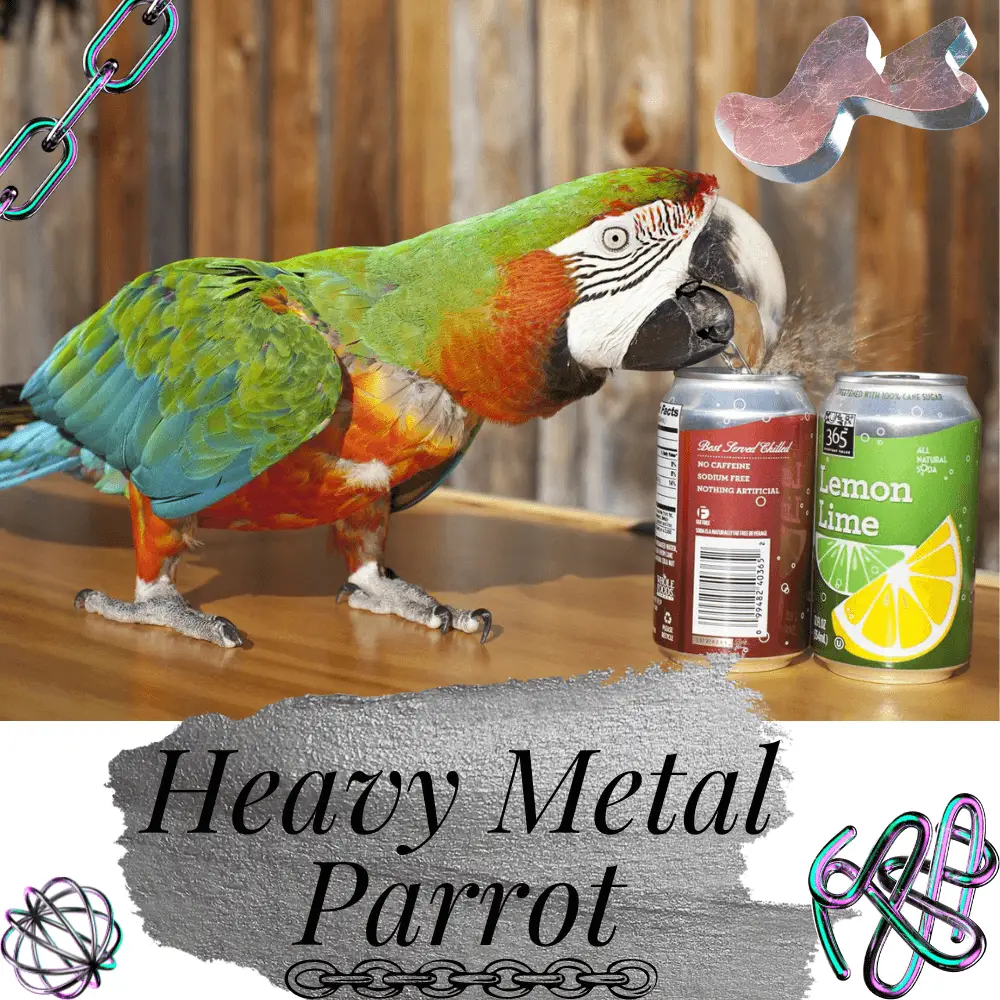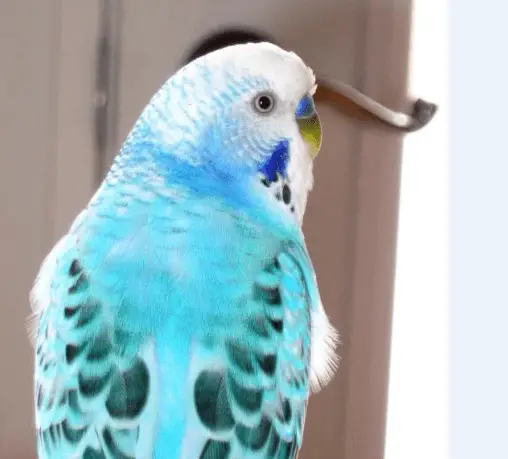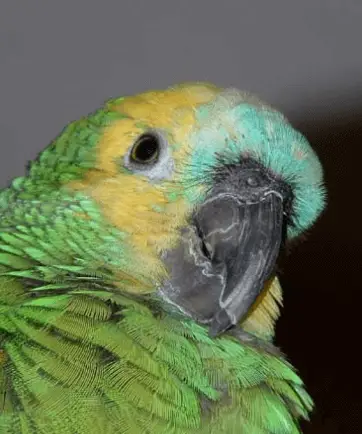
Parrot heavy metal: The post Metal poisoning of the parrots, heavy metal parrot Since this morning, Achilles, a thirteen-year-old cockatiel, has not been doing well. He is very calm, stands with swollen plumage, does not ask to leave his cage and his stools are emerald green. He refuses all food and he regurgitates the water he has drunk in large quantities. Looking at his x-ray, we notice four small metal rings in his gizzard. The owner then remembers finding the bird in the presence of a broken chain * two days ago. He did not believe at the time that he had eaten it.
Parrot heavy metal
Charly the Amazon is not feeling very well. He loses his balance and his vision is blurred. He is nauseous and his urates are wine red.
The x-ray of this parrot reveals the presence of dense particles in its gizzard. Charlie has certainly nibbled at them from the Tiffany lamp he loves to perch on to observe what is going on in the house.

Cocotte, an eight-year-old budgie, is no longer able to get out of his cage as before. A badly healed wing fracture and obesity made her unfit to fly. She can no longer follow her companion Kiki during his escapades in the house. One morning, Cocotte started to vomit, her stools are dark green and she is losing her balance. The possibility of intoxication has been ruled out by her owner who is well aware of her limitations: she never leaves the cage and everything is safe in her immediate environment.
What was his surprise to learn that the X-ray of his parakeet showed radiopaque particles present in his digestive system? The person responsible for Cocotte’s poisoning was Kiki. He spends much of his time out of the cage. He especially likes to sit in front of the bathroom mirror where he sings the apple to his own reflection. When he returns to the cage, he also courts Cocotte and feeds her cheerfully.
It was by examining the mirror closely that Charles realized that its back coating had been eaten away by the bird. Kiki, therefore, picked up particles of heavy metals and gave them back to his partner by feeding her. It is therefore Cocotte who was most exposed to the toxic element without even leaving its cage! he also courts Cocotte and feeds her cheerfully.
It was by examining the mirror closely that Charles realized that its back coating had been eaten away by the bird. Kiki, therefore, picked up particles of heavy metals and gave them back to his partner by feeding her.
It is therefore Cocotte who was most exposed to the toxic element without even leaving its cage! he also courts Cocotte and feeds her cheerfully. It was by examining the mirror closely that Charles realized that its back coating had been eaten away by the bird.
Kiki, therefore, picked up particles of heavy metals and gave them back to his partner by feeding her. It is therefore Cocotte that was most exposed to the toxic element without even leaving its cage!

Zazou the white cockatoo is very happy to be able to spend pleasant moments outside in his new aviary that was recently made for him. Curious and explorer, he is busy inspecting every corner of his new estate. He has fun chipping away at everything, including the bars of the aviary. Zazou was found one morning on the ground, unable to stand on his feet. His anal feathers were soiled with diarrhea and he was vomiting. Dense particles are visible in his gizzard on the x-ray.
Achille, Charlie, Cocotte, and Zazou all suffer from heavy metal poisoning. While lead is responsible for the discomforts of the first three birds, it is rather a zinc that was found in Zazou’s blood. This type of intoxication is unfortunately still too often diagnosed.
All of these birds responded very well to the administration of calcium EDTA, a drug that allows the body to effectively remove toxic metals without doing too much damage. Achilles quickly expelled his metal rings by using a high fiber diet and ingesting small amounts of mineral oil.
These four parrots were lucky enough to get medical attention quickly. They did not keep any consequences of their mishap. However, some individuals exposed to high doses of toxic metals or treated too late may have permanent sequelae (liver or kidney damage, permanent loss of vision, persistent neurological symptoms) or even die.
The speed of intervention certainly makes a big difference. The sources of heavy metals are numerous. Know how to detect them and eliminate them quickly. However, never lose sight of your bird. Who knows what he can do or find without your knowledge? …
Heavy Metal Poisoning in Birds It Can Happen To Anyone Laurie Degernes, DVM, MHP, Diplomate ABVP
SOURCE:AFA – American Federation of Aviculture
Sources of Zinc
- Galvanized wire mesh (often 99.9% zinc or 98% zinc and 1% lead) The powdery, whitish coating that covers the wire mesh after exposure to moisture is also toxic.
- US penny coins made after 1983 (96% to 98% zinc coated with a thin layer of copper)
- Monopoly game pieces. Certain metallic papers cover bottles of wine or champagne.

Lead Sources
- Tiffany lamps
- Old paints or varnishes
- Certain ceramics
- Certain linoleums
- Behind mirrors
- Jewelry made from non-precious metals
- The gray metal outline of some stained glass windows
- The internal weight of the little rocking penguin is sold as a parakeet toy. Older models contain a weight made of lead. There is a danger if the toy is broken. Recent versions of this toy contain a safe metal weight.
Symptoms of heavy metal poisoning

- Weightloss
- Weakness
- Depression
- Emerald-green diarrhea (neurological symptoms: loss of balance, tilted head, seizures, loss of vision)
- Vomiting
- Anorexia
- Great thirst and overproduction of urine
- Blood in urine or wine red urine (more common in Amazon and Eclectus)
* It is important to note that many pieces of jewelry (chains, earrings, rings, etc.) sold at very low prices in big box stores are sometimes made of alloys that may contain lead. It is not recommended to offer them to young children who sometimes have the habit of putting them in their mouths. Cases of human poisoning have been reported in Canada.
** These lists are not exhaustive.




















